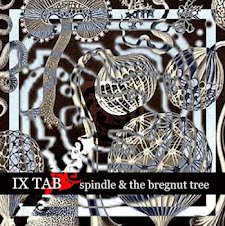
And "Electrosonic" really is worth tracking down, because it's another of those crucial historical documents that seems to have just popped out of nowhere. For the full story of how this album - originally released on the KPM Music Library back in 1972* - came oh-so-briefly back into circulation, go here and start reading from the bottom of the page.
Delia was best known for her Musique Concrete approach to composition in the 1960's, so this album is particularly interesting as it casts illumination on her later work with analogue synthesisers in the following decade. Although Delia was known to be less than impressed with this new form of sound generation, she certainly knew how to get the best out of it, aided and abetted by her long-term friend and collaborator Brian Hodgson (responsible for some of the most fearsomely alien electronic incidental music of the period) and Australian composer Don Harper. And me, being born in 1969, was raised, nay, suckled on the bossom of analogue synthesis...
...and the palpable sense of unease that many of the pieces evoke inevitably summons-forth the spectres of childhood memory. This is only natural, because this music was intended to be beamed into the living rooms of every television-watching household in the land. This album represents just a small portion of the incidental music that my young self, and millions more, were subjected to on a daily basis. Is it any wonder that Dr. Who was so much scarier back then? The sense of outright doom and despair conjured by those programmes was almost entirely due to the soundtracks generated by those volatile solid-state alchemists**.
Whilst those nice chaps at Ghost Box continue on their heroic, yet ultimately flawed***, quest to bottle the essence of post-war analogue life, let us all revel in another deathly dose of the Real McCoy. The Facts are far stranger than the Fiction. This is what really happened...
*Yes, 1972: slap-bang in the middle of the very-possibly eldritch early '70s, as postulated by myself and Kek recently. This record proves we weren't talking out of our arses...
** Although it may be that the lighting, direction and even filmstock used in the '70s conspired to impose an altogether bleak, terrifying para-reality for our young minds to be scarred by.
*** Hey, I like Belbury Poly as much as the next thirty-something, but y'know it's all a bit too cosy, a bit too much pastiche, too polite, too much in tune, to really hit the main hauntological vein. I like a drop of the hard stuff meself...




















3 comments:
"....Although it may be that the lighting, direction and even filmstock used in the '70s conspired to impose an altogether bleak, terrifying para-reality for our young minds to be scarred by..."
Yeah, and that's a theory that I totally subscribe to, also, Nick...there's something about the way that certain TV programs/series/films look...and I think it might have something to do w/ what Frank Zappa called cheepnis...ie a certain lo-budget sensibility that forced producers/designers to think on their feet w/ minimal resources (synthesiser soundtracks were another symptom of this; they were cheaper to make/record than hiring an Orchestra or emsemble paid Musicians Union scaled rates...), and so, yeah, our developing/easily-influenced young minds then got hard-wired to associate Sapphire & Steel/Tomorrow People styled weirdness w/ certain low-rent production/lighting/design techniques...(for us) cheap n cheesy = creepy...
There was this effect you used to get on 70s/ early 80s documentaries where sunlight caught on the film would break into these bright orange hexagons, as if they were burning into the celluloid, which I quite liked...
I agree about Belbury Poly, far too twee, where's the wreckage, or the slime behind the peeling flock wallpaper?
damn, was browsing boomkat earlier today- gutted they sold out that fast...
Post a Comment